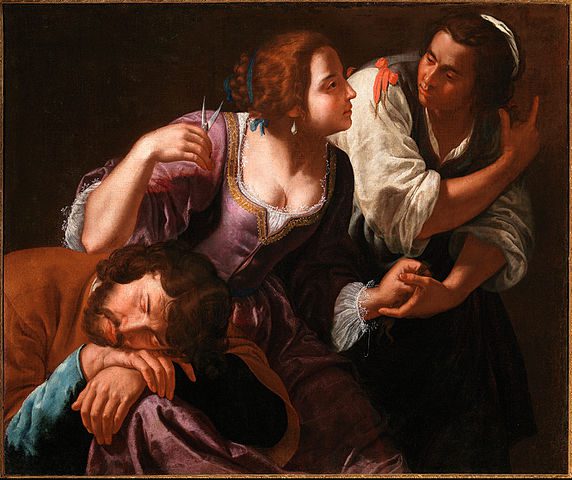
In the world of art history, few stories carry the weight of drama, romance, and tragedy like that of Artemisia Gentileschi and Francesco Maria Maringhi. It’s a tale of passion, betrayal, and the struggles of a woman determined to forge her path in a world that often tried to silence her. Their relationship was not just about love—it was entangled in the politics of gender, power, and the cultural norms of 17th-century Italy. And honestly, it’s as compelling as any modern-day soap opera.
So, why should we care about this centuries-old love affair? Well, because the emotions, heartbreak, and resilience they experienced aren’t just remnants of the past—they’re intensely human experiences that resonate even today. Plus, the fact that Artemisia Gentileschi, one of the most powerful painters of her time, was embroiled in such a complex relationship makes it all the more fascinating.
Artemisia Gentileschi: A Life Shaped by Trauma and Talent
Before we delve into her relationship with Maringhi, it’s essential to understand who Artemisia Gentileschi was. Born in 1593 in Rome, she was the daughter of Orazio Gentileschi, a notable painter influenced by the dramatic chiaroscuro techniques of Caravaggio. From an early age, Artemisia showed an incredible gift for painting—her ability to capture raw emotion and the play of light and shadow was nothing short of remarkable.
But Artemisia’s life was also marked by trauma. When she was 18 years old, she was raped by Agostino Tassi, a friend and colleague of her father. The resulting trial was a scandal, especially since women in that time rarely spoke out about such events. During the trial, Artemisia was subjected to torture to “verify” her testimony, a horrifying reality of the time’s justice system. Despite the public humiliation and the intense scrutiny of her character, she persevered and continued to paint, turning her pain into power.
Artemisia’s most famous works, like Judith Slaying Holofernes, are often seen as expressions of her trauma and her fierce determination to regain control over her own narrative. She didn’t just survive—she thrived, using her art as a voice in a society that preferred her silence.
Francesco Maria Maringhi: The Mysterious Man in Her Life
So, who was Francesco Maria Maringhi? Unlike Artemisia, who is celebrated for her contributions to art, Maringhi remains a bit of an enigma in history. He wasn’t a famous artist or a notable political figure. Instead, he was a Florentine nobleman, whose relationship with Artemisia was revealed through a series of intimate letters exchanged between the two. These letters are among the few pieces of evidence we have that offer a glimpse into their complicated relationship.
Maringhi wasn’t just a fleeting love interest for Artemisia; he was a man who supported her financially and emotionally during some of the most difficult periods of her life. But their relationship was far from simple, and some might argue that it was doomed from the start.
A Love Built on Letters and Longing
The love letters exchanged between Artemisia and Maringhi are the heart of their story. These letters reveal a deep affection and bond between them, but they also highlight the complexities of their relationship. It’s essential to note that their romance was carried out at a distance—Maringhi was often away, leaving Artemisia to navigate her life and career independently.
One of the most striking aspects of their correspondence is how vulnerable and raw Artemisia allowed herself to be with Maringhi. She opened up about her struggles, her frustrations with her career, and the burdens she carried as a woman in a male-dominated society. For his part, Maringhi seemed to provide her with the emotional support she desperately needed.
However, their relationship was far from traditional. Maringhi was married, and while this wasn’t uncommon for the time, it added a layer of tension to their love. Artemisia’s letters sometimes convey a sense of yearning, a desire for stability that she couldn’t quite attain with Maringhi. It’s as though she loved a man she could never fully have.
The Tragedy of Circumstance
The tragedy in Artemisia and Maringhi’s story isn’t just the forbidden nature of their love—it’s also the tragic timing and circumstances that surrounded them. As much as they may have cared for each other, their lives were complicated by external forces, including societal expectations, Maringhi’s marriage, and Artemisia’s artistic career.
At times, Artemisia seemed caught between two worlds. On one hand, she was an ambitious artist, eager to carve out her place in a male-dominated profession. On the other hand, she was a woman yearning for love and companionship, two things that were often difficult to reconcile with her career.
For Maringhi, the relationship must have been equally fraught. While his letters to Artemisia show deep affection, he was, after all, married. The conflict between his duties as a nobleman and his love for Artemisia created a tension that could never fully be resolved.
This push and pull between love and duty, art and society, passion and practicality is what makes their story so tragic. They cared for each other deeply, but the odds were stacked against them from the start.
Art as an Outlet for Love and Pain
For Artemisia, painting wasn’t just a career—it was a lifeline. Her works, particularly her depictions of strong, defiant women, often reflect the emotional turmoil she endured in her personal life. Whether it was the trauma of her rape, the pressures of being a woman artist, or her complicated relationship with Maringhi, her art served as an outlet for her emotions.
One could argue that her relationship with Maringhi fueled some of her most passionate works. While there’s no definitive evidence that specific paintings were directly inspired by him, the emotions expressed in her art—despair, longing, defiance—mirror the intensity of their relationship.
Take her famous painting Judith Beheading Holofernes. While some interpret it as a response to her rape, others believe it could also symbolize the personal struggles she faced in her life, including her relationship with Maringhi. The raw emotion captured in Judith’s determined expression and the graphic intensity of the scene point to the inner battles Artemisia may have fought during her complicated love affair with Maringhi.
A Relationship Built on More than Romance
Though their love letters suggest a deep emotional connection, Artemisia and Maringhi’s relationship was also practical. As a nobleman, Maringhi had the financial means to help Artemisia when she needed it most. Art supplies, travel expenses, and other necessities that fueled her career were often costly, and Maringhi provided her with the funds she needed to continue her work.
However, this support came with its own complications. Being financially dependent on someone, especially someone in a complicated personal situation, added another layer of tension to their relationship. Artemisia was fiercely independent, so it’s possible that this dependence weighed on her emotionally.
Their letters also suggest that Maringhi may have been something of a mentor or advisor to Artemisia, offering her guidance on both personal and professional matters. He clearly cared for her deeply, and his support extended beyond finances; he was a sounding board for her frustrations and struggles, someone who truly understood her, perhaps more than anyone else at the time.
The Lasting Impact of Their Love
Although their relationship did not end with a happily ever after, it left an indelible mark on both their lives. For Artemisia, Maringhi’s emotional and financial support helped her during some of the most difficult years of her career. And for Maringhi, his love for Artemisia was something that endured despite the complications and distance that defined much of their relationship.
Their love story serves as a reminder that relationships, even those that are imperfect or doomed, can shape and influence us in profound ways. Artemisia’s life and work were undoubtedly impacted by her connection to Maringhi, just as his life was shaped by her fiery spirit and extraordinary talent.
Artemisia’s Legacy as a Master Artist
Beyond her relationship with Maringhi, Artemisia’s legacy as an artist remains undeniable. She went on to achieve success in her own right, becoming one of the most celebrated painters of her era. Her work wasn’t just a reflection of her talent, but of her resilience and determination to rise above the challenges life threw her way.
Today, Artemisia’s paintings are considered some of the most powerful depictions of the human condition in art history. Her ability to portray emotion, strength, and vulnerability in her subjects set her apart from her contemporaries. As the art historian Mary Garrard once said, “Artemisia was a woman of extraordinary talent and willpower, whose art, like her life, transcended the boundaries placed on her.”
While her love affair with Maringhi was a significant part of her life, it was only one piece of the complex puzzle that made Artemisia Gentileschi the artist and woman she was.
Love and Loss: Lessons from a Complicated Relationship
In the end, the story of Artemisia Gentileschi and Francesco Maria Maringhi is one of love and loss. It’s a reminder that relationships are rarely simple, especially when external forces like societal expectations, personal ambition, and financial dependency come into play. Artemisia and Maringhi’s love was passionate, but it was also complicated by their individual lives and circumstances.
Despite the challenges, their relationship endured in some form, at least in their letters. And while they may not have achieved a perfect union, their connection left a lasting impression on both



